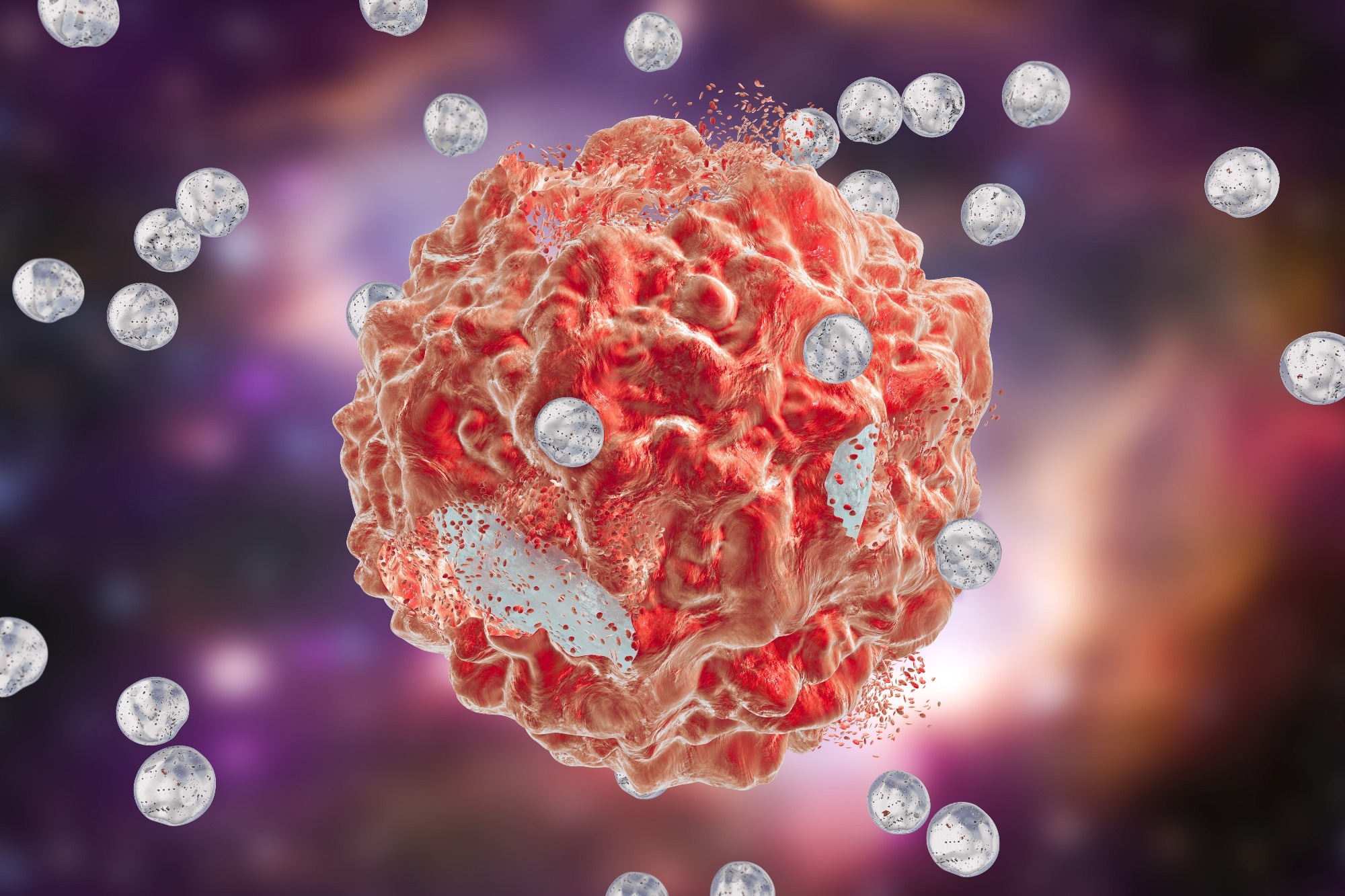Reviewed by Alex SmithDec 5 2022
A device that applies sound waves to divide and sort minute particles located in the blood within minutes has been developed by Engineers at Duke University. The technology is established on a concept referred to as “virtual pillars” and could be advantageous to scientific research and for medical applications.
Minute biological nanoparticles known as “small extracellular vesicles” (sEVs) are discharged from all types of cells in the body and are supposed to play a huge role in cell-to-cell communication and disease transmission.
The novel technology, labeled Acoustic Nanoscale Separation via Wave-pillar Excitation Resonance (ANSWER for short), is not only capable of pulling these nanoparticles from biofluids within 10 minutes but also is capable of sorting them into size groups that are said to have unique biological roles.
The results were published online in the November 23rd issue of the journal Science Advances.
These nanoparticles have significant potential in medical diagnosis and treatment, but the current technologies for separating and sorting them take several hours or days, are inconsistent, produce low yield or purity, suffer from contamination, and sometimes damage the nanoparticles.
Tony Jun Huang, William Bevan Distinguished Professor, Mechanical Engineering and Materials Science, Duke University
“We want to make extracting and sorting high-quality sEVs as simple as pushing a button and getting the desired samples faster than it takes to take a shower,” Huang added.
New research shows that sEVs contain many subgroups with unique sizes (e.g., smaller than 50 nm, between 60 and 80 nm, and between 90 and 150 nm). Each size is said to have diverse biological properties.
The latest discovery of sEV subpopulations has thrilled scientists because of their potential to transform the domain of non-invasive diagnostics, for example, the early detection of Alzheimer’s disease and cancer. However, the particles are yet to find their way into the clinical environment.
Huang said this is mainly because of the problems related to separating and isolating these nano-sized sEV subpopulations. To overcome this challenge, Huang, his doctoral student Jinxin Zhang, and partners at Harvard, UCLA, and Magee-Womens Research Institute created the ANSWER platform.
The device is fitted with a single pair of transducers to produce a standing sound wave that encloses a narrow, enclosed channel full of fluid. This sound wave “leaks” into the liquid center via the channel walls and interacts with the original standing sound wave. Owing to the careful design of the wall thickness, sound frequency, and channel size, this interaction generates a resonance that produces “virtual pillars” along the channel’s center.
Each of these virtual pillars is fundamentally a half-egg-shaped zone of high pressure. As particles try to cross over the pillars, they are forced toward the channel’s edges. Moreover, the bigger the particles, the bigger the force. By altering the series of virtual pillars to produce nuanced forces on the moving nanoparticles, the scientists can accurately categorize them by size into a range of groups established by the requirements of the current experiments.
The ANSWER EV fractionation technology is the most advanced capability for precise EV fractionation, and it will significantly impact the horizon of EV diagnostics, prognostics, and liquid biopsy
David Wong, Director, Center for Oral/Head and Neck Oncology Research, University of California, Los Angeles
In the new article, the scientists show that their ANSWER platform can effectively categorize sEVs into three subgroups with an accuracy of 96% for nanoparticles on the larger end of the range and an accuracy of 80% for the smallest.
 Image Credit: Kateryna Kon/Shutterstock
Image Credit: Kateryna Kon/Shutterstock
They also demonstrate flexibility in their system, regulating the number of groupings and ranges of sizes with basic updates to the parameters of the sound wave. Each of the experiments just took 10 minutes to perform, whereas other techniques, such as ultra-centrifugation, consume numerous hours or days.
Due to its contact-free nature, ANSWER offers a biocompatible approach for the separation of biological nanoparticles. Unlike mechanical filtration methods, which have fixed separation cutoff diameters, ANSWER offers a tunable approach to nanoscale separation, and the cutoff diameter can be precisely modified by varying the input acoustic power.
Jinxin Zhang, Doctoral Student, Department of Mechanical Engineering and Materials Science, Duke University
Going forward, the team will pursue enhancing the ANSWER technology so that it can be effective in purifying other biologically pertinent nanoparticles such as antibodies, viruses, and proteins.
This research was supported by the National Institutes of Health (UH3TR002978, R01HD103727, U18TR003778, R01GM132603, R01GM143439 R01GM135486, R01GM144417, and R44AG063643) and the National Science Foundation (CMMI-2104295 and CMMI-2104526).
Journal Reference:
Zhang, J., et al. (2022) A solution to the biophysical fractionation of extracellular vesicles: Acoustic Nanoscale Separation via Wave-pillar Excitation Resonance (ANSWER). Science Advances. doi.org/10.1126/sciadv.ade0640.